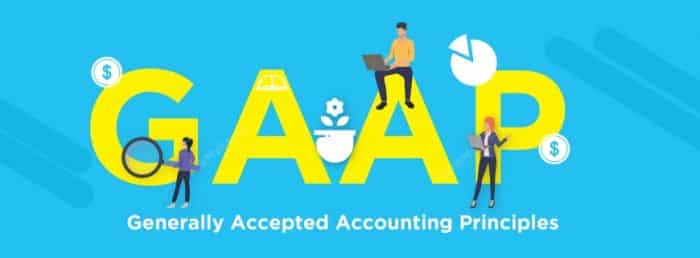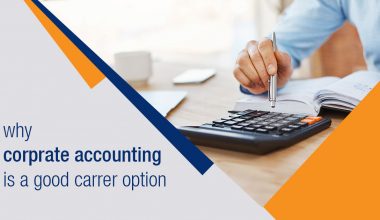Taxpayers who are qualified to pay their quarterly taxes pay a percentage of their estimated annual income tax each quarter of the year, which makes these payments estimated. Hence, we will take you through a step-by-step guide on how to pay your quarterly taxes as a self-employed with a small business in California in 2023.
How to Pay Quarterly Taxes
Before we see how we can pay our quarterly taxes as a business owner, a corporation, or a sole proprietor, let us understand the meaning of quarterly taxes.
What is a quarterly tax? They are installments made in advance of the annual tax return in each quarter. You pay a percentage of your approximate amount of tax for the year each quarter, but the payments are estimated because they happen before you file your tax return. Individuals and organizations can use the quarterly taxes and deadlines to create a system for paying their regular installments toward their final income tax bill.
Medicare, Social Security, and your income tax are all covered by these quarterly tax payments. As a result, you need to become knowledgeable about how those taxes work: the income tax and the self-employment tax. Low-paid workers pay the same income tax rates as self-employed people.
Why Does the Government Require Estimated Tax Payments Every Quarter?
Before going into how to pay quarterly taxes, it’s important to know who owns the payments and why the IRS requires them. The income tax system in the United States is a pay-as-you-go mechanism. Taxpayers pay taxes as they make money under this system. As a result, the government has the ability to tax W-2 employees through withholdings and self-employed individuals through quarterly tax payments. Your taxes are often not deducted from your paychecks if you work for yourself as an independent contractor or freelancer. As a result, the Internal Revenue Service (IRS) collects income taxes through quarterly tax payments.
While making quarterly tax estimates may seem inconvenient, it can help you avoid a large tax payment come tax season. Furthermore, paying your taxes quarterly makes them easier to control across the year.
What Are The Projected Quarterly Tax Deadlines In 2023?
The usual federal income tax deadlines for 2023 have not yet been amended by the IRS. For the year 2023, here are the expected quarterly tax due dates
- The deadline for the first quarter was April 18, 2022.
- For second-quarter was June 15, 2022.
- For third-quarter was September 15, 2022.
- The deadline for the fourth quarter was January 17, 2023.
Corporations will pay their estimated quarterly taxes on the 18th of the fourth, 15th of the sixth, ninth, and twelfth months of their fiscal year. That means that, with the exception of the fourth quarter, if a company follows the calendar year, its dates will be the same as the individual deadlines.
Is It Possible To Get A Quarterly Tax Extension?
When the IRS does grant extensions, they usually only apply to the paperwork. An extension will offer you extra time to file your tax return, but it will not modify your tax payment due date. There is no normal extension available because your quarterly tax deadlines do not always necessitate paperwork.
If you need extra time to finish your tax return, don’t be afraid to extend the date. The standard deadline for submitting tax returns is April 15, but you may simply request an advance to extend the deadline six months to October 15.
What Happens If I Don’t Pay My Expected Tax Payment On Time?
Once you notice you’ve skipped a quarterly anticipated tax payment, make arrangements to pay it right away. You could be punished if you pay late, so it’s best to make the payment as soon as you remember. Some people believe they can pay numerous quarters at once or even pay for everything at the end. Payments received after the quarter in which they are due may be subject to a penalty.
Is It Possible For Me To Skip An Estimated Tax Payment?
The Internal Revenue Service (IRS) needs monthly tax payments throughout the year. When you’ve already paid enough in projected taxes with your prior installments, missing an estimated tax payment is only a good idea.
You may well be able to prevent paying anticipated tax payments if you owe less than $1,000 at the end of the year or if you’ve already paid virtually all of what you owed the previous year.
What Are The Consequences Of Failing To Pay Estimated Taxes?
Underpayment of estimated tax results in a financial penalty from the IRS. When you file your tax return, this will be added to the amount you owe. However, the higher the fine, the less you pay in advance.
What Can I Do To Make Quarterly Tax Payments go More Smoothly?
Taxes don’t have to be a hassle every quarter. You won’t have an issue if you take the time at the beginning of the year to calculate your projected tax payable and then stick to your quarterly payment plan.
Collaborating with an accountant can assist you in developing a safe and accurate estimate of how much you’ll need to pay to avoid charges. You should be able to manage your quarterly payments as long as you stay organized and keep up with your bookkeeping. The procedure will also make preparing your tax return at the end of the year easier
How Do You Figure Up Your Quarterly Taxes?
Using an estimate of your total expected income for the year is the easiest way to compute your quarterly taxes. Begin with the prior year’s amount if you plan to earn the same as last year. When your company is just getting started or your predicted income is drastically different from previous years, you may need to do more thorough calculations based on your quarterly income. If you want an exact estimate of your quarterly tax payable, follow these simple steps:
- Calculate the entire amount of money you intend to make in the future.
- Calculate your adjusted gross income by subtracting your tax deductions (AGI).
- To calculate your anticipated income tax owed, multiply your AGI by the applicable tax rate.
- Keep in mind how much money you anticipate making in total from step one? Calculate the self-employment taxes you’ll owe for Social Security and Medicare using that total estimated income.
- Sum up your expected income tax and expected self-employment taxes together. That’s your year-end tax projection.
- Split your annual estimated tax by four (for the four quarters of the year) to get your quarterly tax amount!
Processing quarterly tax payments online are the quickest and most convenient way to do so. You can also send money by mailing it if you like. Spend the effort to learn how much you’ll need to pay in quarterly taxes, once they’re due, and how to submit your payments to the IRS to prevent any extra taxes. Here’s how to make a quarterly payment.
How To Pay Quarterly Taxes For Self-Employed
If you’re self-employed, don’t wait till April to pay your quarterly taxes. If you run your own business, (still as a self-employed) you’ll have to pay your taxes on a quarterly basis. Too many enterprises have learned the hard way that fines and interest can follow from failing to meet their obligations. Here are some things you need to know about how you can pay your quarterly taxes as a self-employed person.
How To Make A Quarterly Tax Payment
After you’ve figured out how to pay your quarterly taxes payments as a self-employed person,
- You can use the Electronic Federal Tax Payment System to send them online.
- You can also pay with IRS-supplied documentation.
- You’ll pay all the taxes which aren’t handled by your quarterly payments if you complete your annual tax return.
If you have an overpayment of tax after filing Form 1040 or 1040-SR, you have alternative options. Instead of being repaid, you can petition for a portion or all of your overpayment to be applied to your anticipated tax for the current tax year.
While calculating your tax payments for the current tax year, keep this figure in mind. You can also use the overpayment allocated against your estimated taxes as a payment for the first quarter of the current tax year made by the April deadline.
So you can also calculate your quarterly payments for the following tax year using your total overall annual income. also you can manage your revenue, costs, and expenditures all year with systems like QuickBooks Self-Employed, which will aid in calculating how you pay your quarterly taxes payments.
What Is A Qualifying Business Income Deduction, And How Does It Work?
By filing the qualifying business income (QBI) deduction, you might well be able to further lower your self-employment income. This permits you to deduct up to 20% of your pass-through income from self-employment or owning a small business from your taxable income.
This can also lower the net amount of qualifying trade or company income, profits, deductions, and losses. Capital gains and losses, dividends, interest income, and other non-business profits and losses are excluded from this calculation.
To qualify for the QBI deduction in 2021, your taxable income must be less than $164,900 for single taxpayers and $329,800 for joint filers. In 2022, the restrictions will increase to $1666900 and $333,100, respectively.
To file your adjusted gross income on Form 1040, you should first figure out your self-employment or business income with Schedule C. This pass-through penalty can then be calculated.
What Tax Responsibilities Do I Have As A Self-Employed Person?
As a self-employed person, you must normally submit a yearly tax return and pay anticipated tax quarterly.
Self-employed people must normally pay both income tax and self-employment tax. People that work for themselves are subject to the SE tax, which is a Social Security and Medicare tax. It’s comparable to how so many wage earners’ Social Security and Medicare taxes are deducted from their salary. In essence, the term “self-employment tax” applies solely to Social Security and Medicare taxes, not to any other type of tax (like income tax).
Self-employed people must normally pay both income tax and self-employment tax. People that work for themselves are subject to the SE tax, which is a Social Security and Medicare tax. It’s comparable to how so many wage earners’ Social Security and Medicare taxes are deducted from their salary. In essence, the term “self-employment tax” applies solely to Social Security and Medicare taxes, not to any other type of tax (like income tax).
One must calculate one net profit or loss from your firm before determining if you are responsible for self-employment tax and income tax. This is accomplished by deducting your costs from your revenue in business. If your costs are far below your revenue, the effect is called net profit, and it appears on page 1 of Form 1040 or 1040-SR as part of your income. If your costs exceed your revenue, the difference is referred to as a net loss. On page 1 of Form 1040 or 1040-SR, you can normally deduct your loss from your gross income. However, in some cases, your loss is limited.
Is It Possible To Pay On A Different Schedule?
Yes. You can send lower amounts on a weekly, bimonthly, or monthly basis if you prefer it that way; but just make sure you pay sufficiently well before the end of each quarter. You can also pay your entire year’s estimated taxes at once
What If I’m Unable To Meet The Quarterly Payment Deadlines?
When you can not make one or more of the aforementioned dates, you can apply for an IRS payment plan online to avoid charges on the latter.
How To Pay Quarterly Taxes For Small Business
Being organized is one of the most crucial core parts of estimating how to pay your quarterly taxes as a small business owner. Quarterly payments are made from January to March, April to June, July to September, and October to December. Maintain a file of your profits, losses, spending, and other information throughout each quarter, both electronically and on paper. Set money away on a regular basis to guarantee you have enough to cover your debt. You might need to see a bookkeeper, accountant, or tax preparer, preferably one who works exclusively with entrepreneurs, if needed.
To pay also, your quarterly taxes as a small business owner, aren’t all awful if you plan ahead. In addition, as you pay your quarterly taxes as a small business owner, you need to mark your calendars, organize your paperwork, plan your budget, and submit your payments on time. To keep your firm financially wise throughout the year, develop consistent routines to pay your quarterly taxes, especially when it comes to your tax obligations as a small business owner.
How To Pay Quarterly Taxes In California
A credit card payment option for businesses was enabled in May 2014. The California Franchise Tax Board (FTB) now accepts credit card payments from corporations, partnerships, and limited liability entities (LLCs). To pay your quarterly taxes in California, you can pay with a Discover, MasterCard, Visa, or American Express card. Official Payments Corporation, a third-party credit card processor, levies a comfort service charge. As you pay your quarterly taxes in California, the sum of the fee is determined by the amount of your tax payment.
With Electronic Estimated Tax, an Electronic Payment Service Provider will thus automatically pull all of your tax information from the IRS website (EPSP).
Payment Of Unpaid Tax Balances With Tax Returns
Electronic Estimated Tax Payments are easy to make and can help to save you money by avoiding fines and penalties filing. Electronic payments have a smaller price than personal checks, so even if these forms appear scary at first glance, it’s worth switching. Best of all, Electronic Estimated Taxes are not only more convenient for you, but they are also environmentally friendly! Using Electronic Payment Service Providers as you pay your quarterly taxes in California, will make electronic tax payments simple (EPSPs).
Electronic Estimated Tax Payment Procedures:
- You must be signed in to your EPSP account to make an electronic payment to the Franchise Tax Board of California.
- Go to Electronic Payments on the California Franchise Tax Board website when you already have your login details.
- To get started, enter your EPSP login credentials.
Payments or Extension Payments
Electronic Estimated Tax Payments are a convenient way to pay your quarterly taxes ahead of time in California. Electronic Payment Service Providers (EPSPs) thus offer an Electronic Funds Withdrawal extension payment, allowing you to pay your taxes even beyond the April 15th deadline! Even if these documents appear onerous at first glance, electronic Extension Payments have a cheaper charge than paper checks, so it’s worth switching.
Payment for Estimated Payments
Estimated tax payments are a simple and effective method to develop your tax payments on time. Electronic payments have a cheaper rate than paper checks, so even if those very same forms appear threatening at first glance, it’s worth switching. Best of all, Electronic Estimated Taxes are not only more convenient for you, but they are also environmentally friendly! When paying with a paper check or a Direct Debit/ACH withdrawal from your bank account, Electronic Payment Service Providers (EPSPs) offer electronic funds withdrawal as an alternative.
Taxpayers can also pay their projected quarterly tax payments, extension payments, or the outstanding debt on their past taxes or current year tax returns in one of four methods, according to the California Franchise Tax Board.
- Individual and business taxpayers can use Web Pay.
- Checks and money orders can be mailed.
- In-Person at Field Offices of the Franchise Tax Board
- Official Payments Corporation accepts credit cards online.
Who Is Responsible To Pay Quarterly Taxes In California?
If you plan to owe at least in 2023, you should make projected tax payments.
- $500
- If you’re married and filing your RDP separately, you’ll save $250.
However, if you anticipate that your withholding and credits will be less than the lesser of the following:
- 90% of the tax revenue for the current year
- Taxes from the previous year are refunded in full (including alternative minimum tax)
The Use Of The Previous Year’s Tax Returns Is Limited.
If you have to make anticipated tax payments and your California adjusted gross income in the previous year was higher than:
- $150,000
- If you’re married and filing separately, you’ll have to pay $75,000 in taxes.
Then you must base your estimated tax on the lesser of these two options:
- For the current tax year, you owe 90% of your income tax.
- 110 percent of your previous tax year’s tax (including alternative minimum tax)
When Should You Pay?
The tax payments will be required in four installments. California is not like the rest of the country. You must pay on or before the dates listed below to avoid a penalty.
| Payment | Amount | Due date |
| 1 | (Jan. 1 – March 31) 30% | April 18, 2022, |
| 2 | (April 1 – May 31) 30% | June 15, 2022 |
| 3 | (June 1 – Aug. 31) 0% | September 15, 2022 |
| 4 | (Sept. 1 – Dec. 31) 30% | January 17, 2023 |
When Should You File Taxes Quarterly?
The usual federal income tax deadlines for 2023 have not yet been amended by the IRS. For the year 2023, here are the expected quarterly tax due dates:
- The deadline for the first quarter is April 18, 2022.
- For second-quarter is June 15, 2022.
- For third-quarter is September 15, 2022.
- The deadline for the fourth quarter was January 17, 2023.
Can I Pay Estimated Taxes All at Once?
Yes. You can also pay your entire year’s estimated taxes at once. Also, you can send lower amounts on a weekly, bimonthly, or monthly basis if you prefer it that way; but just make sure you pay sufficiently well before the end of each quarter.
How Do I Pay Quarterly Taxes in THE US?
In California (USA) you can pay with a Discover, MasterCard, Visa, or American Express card. Official Payments Corporation, a third-party credit card processor, levies a comfort service charge. The sum of the fee is determined by the amount of your tax payment.
Is It Worth Paying Quarterly Taxes?
You will likely need to make quarterly estimated tax payments if your employer does not withhold federal income tax from your pay or if you have other sources of income and your withholding is insufficient to cover your tax liability.
Can I Pay My Quarterly Taxes All at Once?
No. Individuals frequently ponder, “Can I pay my estimated taxes all at once?” instead, put down a part of the total price now. Many people wonder about this because they view quarterly tax filing as an unnecessary hassle.
How Much Should You Set Aside to Pay Quarterly Taxes?
Divide last year’s company income by four to get a rough estimate for this year. Next, subtract 30% from that total. The sum obtained is the amount you will need to set aside (and subsequently pay) in order to cover your quarterly projected tax obligations.
Related Articles
- Payroll Report: Detailed Guide to Payroll Report
- FORM 720 (Excise Taxes): Instructions and Guidelines
- How To Maximize Potential Of A Food Business Franchise
- 7 Reasons Why You Should Franchise a Business
- DECENTRALIZED ORGANIZATIONAL STRUCTURE: Meaning And Advantages
- NARROWCASTING: Definition, Examples & Process






